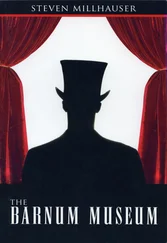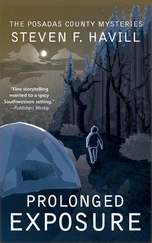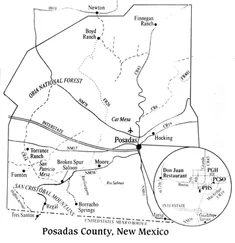Steven Dubner - Freakonomics
Здесь есть возможность читать онлайн «Steven Dubner - Freakonomics» весь текст электронной книги совершенно бесплатно (целиком полную версию без сокращений). В некоторых случаях можно слушать аудио, скачать через торрент в формате fb2 и присутствует краткое содержание. Жанр: Старинная литература, на русском языке. Описание произведения, (предисловие) а так же отзывы посетителей доступны на портале библиотеки ЛибКат.
- Название:Freakonomics
- Автор:
- Жанр:
- Год:неизвестен
- ISBN:нет данных
- Рейтинг книги:3 / 5. Голосов: 1
-
Избранное:Добавить в избранное
- Отзывы:
-
Ваша оценка:
- 60
- 1
- 2
- 3
- 4
- 5
Freakonomics: краткое содержание, описание и аннотация
Предлагаем к чтению аннотацию, описание, краткое содержание или предисловие (зависит от того, что написал сам автор книги «Freakonomics»). Если вы не нашли необходимую информацию о книге — напишите в комментариях, мы постараемся отыскать её.
Freakonomics — читать онлайн бесплатно полную книгу (весь текст) целиком
Ниже представлен текст книги, разбитый по страницам. Система сохранения места последней прочитанной страницы, позволяет с удобством читать онлайн бесплатно книгу «Freakonomics», без необходимости каждый раз заново искать на чём Вы остановились. Поставьте закладку, и сможете в любой момент перейти на страницу, на которой закончили чтение.
Интервал:
Закладка:
In the first year after Roe v. Wade, some 750,000 women had abortions in the United States (representing one abortion for every 4 live births). By 1980 the number of abortions reached 1.6 million (one for every 2.25 live births), where it leveled off. In a country of 225 million people, 1.6 million abortions per year—
one for every 140 Americans—may not have seemed so dramatic. In the first year after Nicolae Ceau?escu’s death, when abortion was reinstated in Romania, there was one abortion for every twenty-two Romanians. But still: 1.6 million American women a year who got pregnant were suddenly not having those babies.
Before Roe v. Wade, it was predominantly the daughters of middle-or upper-class families who could arrange and afford a safe illegal abortion. Now, instead of an illegal procedure that might cost $500, any woman could easily obtain an abortion, often for less than $100.
What sort of woman was most likely to take advantage of Roev. Wade? Very often she was unmarried or in her teens or poor, and sometimes all three. What sort of future might her child have had? One study has shown that the typical child who went unborn in the earliest years of legalized abortion would have been 50 percent more likely than average to live in poverty; he would have also been 60 percent more likely to grow up with just one parent. These two factors—
childhood poverty and a single-parent household—are among the strongest predictors that a child will have a criminal future. Growing up in a single-parent home roughly doubles a child’s propensity to commit crime. So does having a teenage mother. Another study has shown that low maternal education is the single most powerful factor leading to criminality.
In other words, the very factors that drove millions of American women to have an abortion also seemed to predict that their children, had they been born, would have led unhappy and possibly criminal lives.
To be sure, the legalization of abortion in the United States had myriad consequences. Infanticide fell dramatically. So did shotgun marriages, as well as the number of babies put up for adoption (which has led to the boom in the adoption of foreign babies). Conceptions rose by nearly 30 percent, but births actually fell by 6 percent, indicating that many women were using abortion as a method of birth control, a crude and drastic sort of insurance policy.
Perhaps the most dramatic effect of legalized abortion, however, and one that would take years to reveal itself, was its impact on crime. In the early 1990s, just as the first cohort of children born after Roev. Wade was hitting its late teen years—the years during which young men enter their criminal prime—the rate of crime began to fall. What this cohort was missing, of course, were the children who stood the greatest chance of becoming criminals. And the crime rate continued to fall as an entire generation came of age minus the children whose mothers had not wanted to bring a child into the world. Legalized abortion led to less unwantedness; unwantedness leads to high crime; legalized abortion, therefore, led to less crime.
This theory is bound to provoke a variety of reactions, ranging from disbelief to revulsion, and a variety of objections, ranging from the quotidian to the moral.
The likeliest first objection is the most straightforward one: is the theory true?
Perhaps abortion and crime are merely correlated and not causal.
It may be more comforting to believe what the newspapers say, that the drop in crime was due to brilliant policing and clever gun control and a surging economy. We have evolved with a tendency to link causality to things we can touch or feel, not to some distant or difficult phenomenon. We believe especially in near-term causes: a snake bites your friend, he screams with pain, and he dies.
The snakebite, you conclude, must have killed him. Most of the time, such a reckoning is correct. But when it comes to cause and effect, there is often a trap in such open-and-shut thinking. We smirk now when we think of ancient cultures that embraced faulty causes—the warriors who believed, for instance, that it was their raping of a virgin that brought them victory on the battlefield. But we too embrace faulty causes, usually at the urging of an expert proclaiming a truth in which he has a vested interest.
How, then, can we tell if the abortion-crime link is a case of causality rather than simply correlation?
One way to test the effect of abortion on crime would be to measure crime data in the five states where abortion was made legal before the Supreme Court extended abortion rights to the rest of the country. In New York, California, Washington, Alaska, and Hawaii, a woman had been able to obtain a legal abortion for at least two years before Roe v. Wade. And indeed, those early-legalizing states saw crime begin to fall earlier than the other forty-five states and the District of Columbia. Between 1988 and 1994, violent crime in the early-legalizing states fell 13 percent compared to the other states; between 1994 and 1997, their murder rates fell 23 percent more than those of the other states.
But what if those early legalizers simply got lucky? What else might we look for in the data to establish an abortion-crime link?
One factor to look for would be a correlation between each state’s abortion rate and its crime rate. Sure enough, the states with the highest abortion rates in the 1970s experienced the greatest crime drops in the 1990s, while states with low abortion rates experienced smaller crime drops. (This correlation exists even when controlling for a variety of factors that influence crime: a state’s level of incarceration, number of police, and its economic situation.) Since 1985, states with high abortion rates have experienced a roughly 30 percent drop in crime relative to low-abortion states. (New York City had high abortion rates and lay within an early-legalizing state, a pair of facts that further dampen the claim that innovative policing caused the crime drop.) Moreover, there was no link between a given state’s abortion rate and its crime rate before the late 1980s—when the first cohort affected by legalized abortion was reaching its criminal prime—
which is yet another indication that Roe v. Wade was indeed the event that tipped the crime scale.
There are even more correlations, positive and negative, that shore up the abortion-crime link. In states with high abortion rates, the entire decline in crime was among the post-Roe cohort as opposed to older criminals. Also, studies of Australia and Canada have since established a similar link between legalized abortion and crime. And the post-Roe cohort was not only missing thousands of young male criminals but also thousands of single, teenage mothers—for many of the aborted baby girls would have been the children most likely to replicate their own mothers’ tendencies.
To discover that abortion was one of the greatest crime-lowering factors in American history is, needless to say, jarring. It feels less Darwinian than Swiftian; it calls to mind a long ago dart attributed to G. K. Chesterton: when there aren’t enough hats to go around, the problem isn’t solved by lopping off some heads.
The crime drop was, in the language of economists, an “unintended benefit” of legalized abortion. But one need not oppose abortion on moral or religious grounds to feel shaken by the notion of a private sadness being converted into a public good.
Indeed, there are plenty of people who consider abortion itself to be a violent crime. One legal scholar called legalized abortion worse than either slavery (since it routinely involves death) or the Holocaust (since the number of post-Roe abortions in the United States, roughly thirty-seven million as of 2004, outnumber the six million Jews killed in Europe). Whether or not one feels so strongly about abortion, it remains a singularly charged issue. Anthony V.
Читать дальшеИнтервал:
Закладка:
Похожие книги на «Freakonomics»
Представляем Вашему вниманию похожие книги на «Freakonomics» списком для выбора. Мы отобрали схожую по названию и смыслу литературу в надежде предоставить читателям больше вариантов отыскать новые, интересные, ещё непрочитанные произведения.
Обсуждение, отзывы о книге «Freakonomics» и просто собственные мнения читателей. Оставьте ваши комментарии, напишите, что Вы думаете о произведении, его смысле или главных героях. Укажите что конкретно понравилось, а что нет, и почему Вы так считаете.











